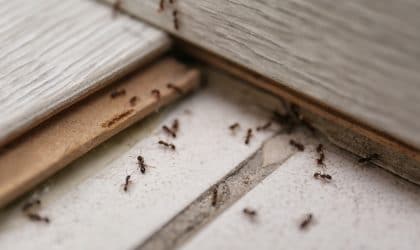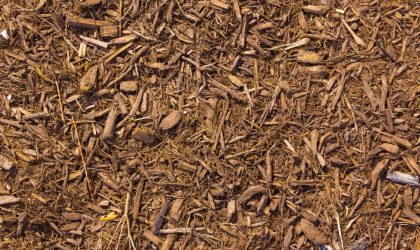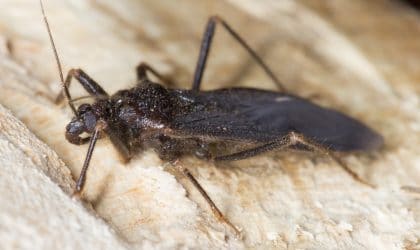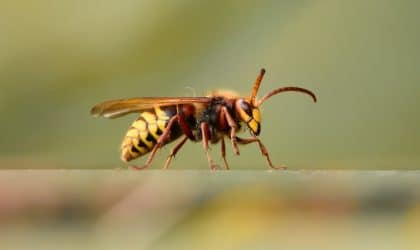Warning Signs of Carpenter Ants – Have You Got an Infestation?
At the first sign of carpenter ants, you need to take action, because they can cause extensive and expensive structural damage to your home! Here's how to spot the early warning signs of a carpenter ant infestation.
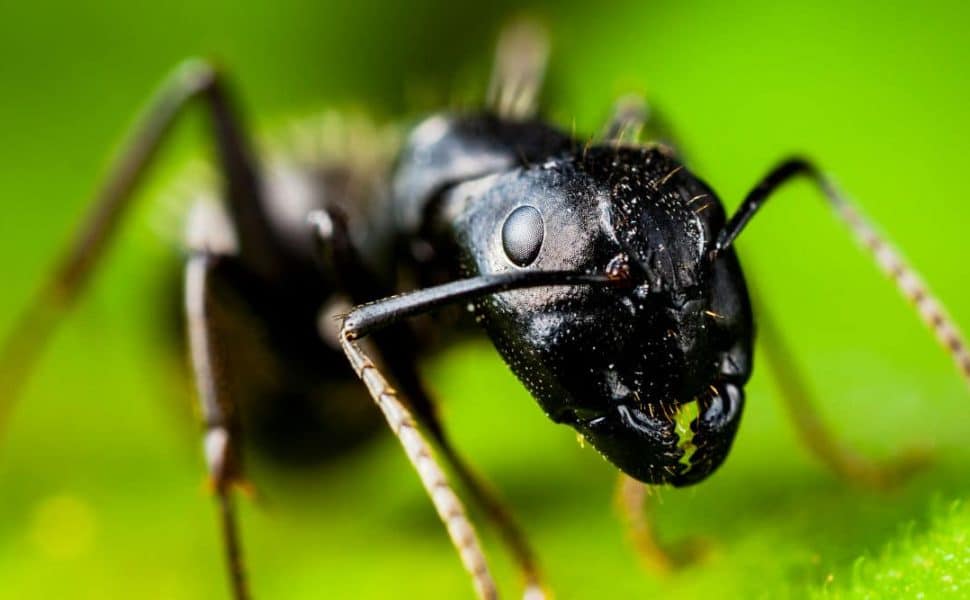
Ants, we all know them and hate them. Yes, they are fascinating to watch, but they are even more annoying to get rid of.
And what many don’t know is that some ants aren’t just irritating, they are a danger to your home.
While the common black ant is just looking for a tasty treat to take back to the outside colony, the carpenter ant is different and has a more sinister reason for being in your home.
Their favorite pastime is burrowing into wood, especially damp wood. And it is this burrowing behavior that can be very destructive. It can cause significant structural issues in your home if left unchecked for too long.
But fear not, readers, because in this article, we will show you how to identify signs of carpenter ants. As well as explaining the different stages of carpenter ant infestations in the home and the signs to watch out for.
Carpenter Ant Infestation Signs at a Glance
- Large ants in or around your house
- Wood shavings deposited around the house
- Ant convoys outside
- Faint rustling noises in your walls
- Large winged ants
- Sagging timber
Key Carpenter Ant Behaviors
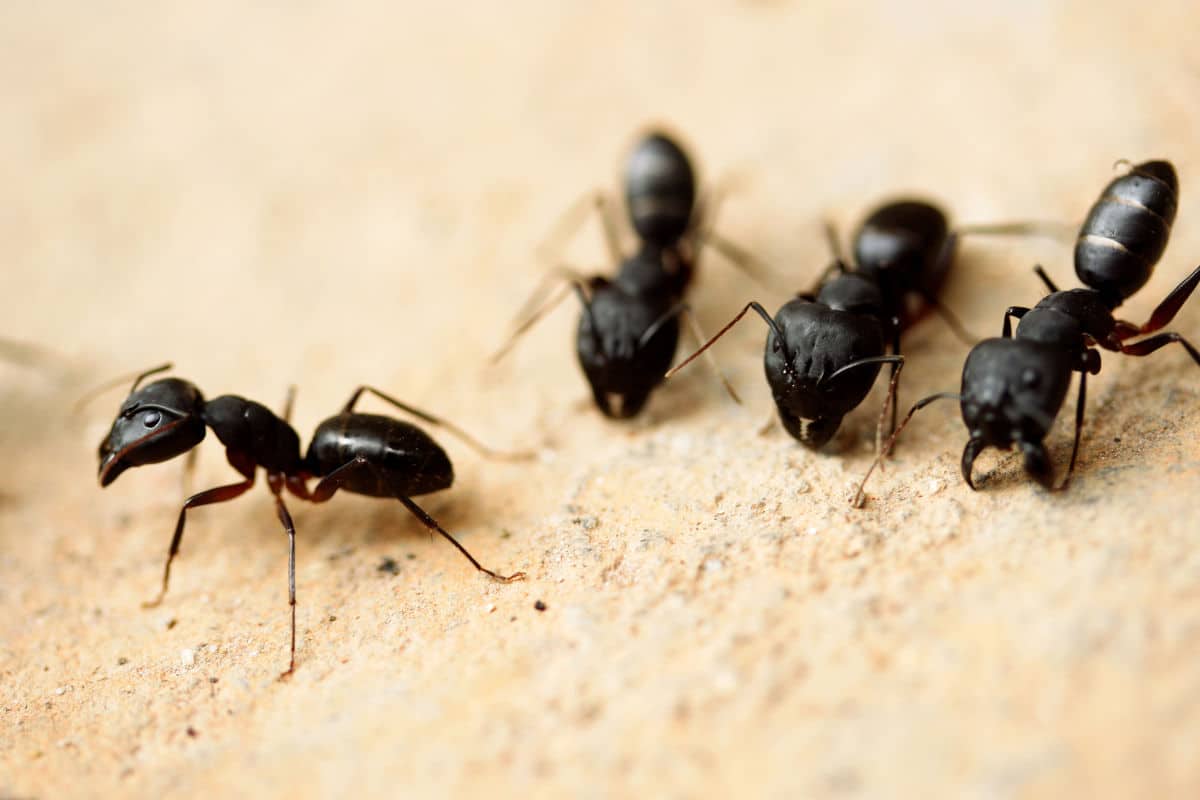
These guys are called carpenter ants for a reason. They like wood, but unlike termites, which they are sometimes mistaken for, they do not eat wood.
Instead, they burrow into it to hollow it out, making space for their multiple roomed nests.
Their most common nesting place is woodland floors, where there is an abundance of damp, decaying wood. This is where you will find the central nest. And your home, with its dark, damp corners and crawl spaces, makes an excellent spot for a satellite nest.
Carpenter ants will be attracted to the timbers in your house. This is because they are likely to have been softened by age, leaks, and sometimes rot, making it easier for them to burrow into the wood and create space to live and breed in.
Once inside, they will send out a handful of worker ants to forage for food. This is a key characteristic of carpenter ants because you will only see a few at a time. Compared to other species of ant that form long lines of worker ants when foraging.
Carpenters ants are usually found in joists, timber frame stud walls, porch pillars, roofs, windowsills, and loft and crawl spaces.
They are likely to enter the home through vents, wall cracks, and drilled holes made for pipework and cables.
Identifying Carpenter Ants
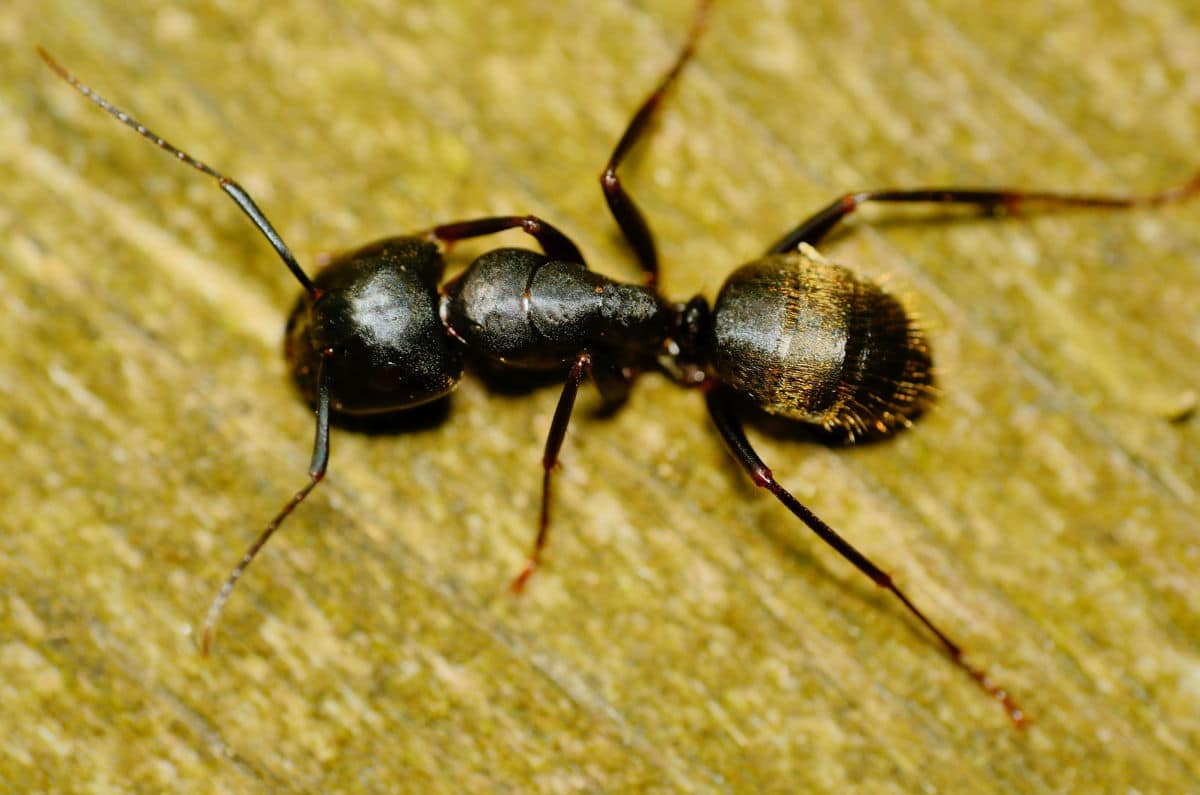
Most ants look the same to the untrained eye, with the most apparent difference being size.
Carpenter ants are the largest species of home nesting ants. Compared to common pavement ants that come in at around ⅛ of an inch, the carpenter ant can be up to 5 times larger at an average ⅝ of an inch.
This only helps if they are kind enough to stand still while you measure them. Luckily, carpenter ants have three other differences that set them apart.
First is their single node between the thorax and the abdomen. This is the little ‘waist’ area that has a spike on top. Compared to the common pavement ant that has two nodes.
Secondly is their rounded even thorax, which is the first segment of the body behind the head. Other ants have an uneven bumpy looking thorax, whereas the carpenters is rounded and smooth.
And thirdly, carpenter ants have a well-formed ‘heart-shaped’ head. Compared to most other ants who inherit a circular shaped one.
When it comes to their body color, the carpenter ant can be black, dark brown, or red. So unlike other ants, their color isn’t a useful indicator.
Signs of a Carpenter Ant Invasion
Here are the main signs to look for if you suspect you have a carpenter ant invasion in no particular order.
Big Black Ants
The most immediate sign of a carpenter ant invasion is their presence inside the house. They will be obvious to the naked eye due to their larger size.
This is not always a sure sign that you have an infestation. It could be just a lone worker on the forage.
An easy way to find out is to follow it and see where it disappears. If it heads out through a hole, it’s safe to say it might just be the one.
If it goes under the baseboard and you see sawdust, chances are there’s many more calling your home, home.
Wood Shavings
Carpenter ants do not eat the wood they destroy. They only carve it. So unlike other wood-eating insects, they will leave a trail.
So, look out for this ‘frass’ as it is known, in areas where the nearby wood is soft. Such as wall studs, floor joists, or even wooden furniture if it is a softwood.
Frass is the name given to the piles of sawdust that contain more than just wood. They also contain bits of smaller insects that the carpenter ants have eaten and discarded.
If you only find one pile, be sure to check that it is a shaving pile and not just dust from a loose joint on your furniture. You’d be surprised how many have made this mistake!
Ant Convoys
The carpenter ant is polymorphic, and this means that the workers will be of different shapes and sizes. Compared to standard worker ants who are uniform in size.
It’s another great way to know if your new lodgers are carpenter ants. If they are of different sizes and shapes, you have your answer.
Rustling in the Wall
If you’ve ever had a mouse take up residence in your pad, you’ll have heard them scurrying around in the night. Carpenter ants are similar, and although they don’t scurry, they do rustle in the walls, which you can hear when it is quiet.
As they scrape away wood and carve out their living quarters, they can make quite the racket.
Signs That Mean You Have a BIG Carpenter Ant Problem
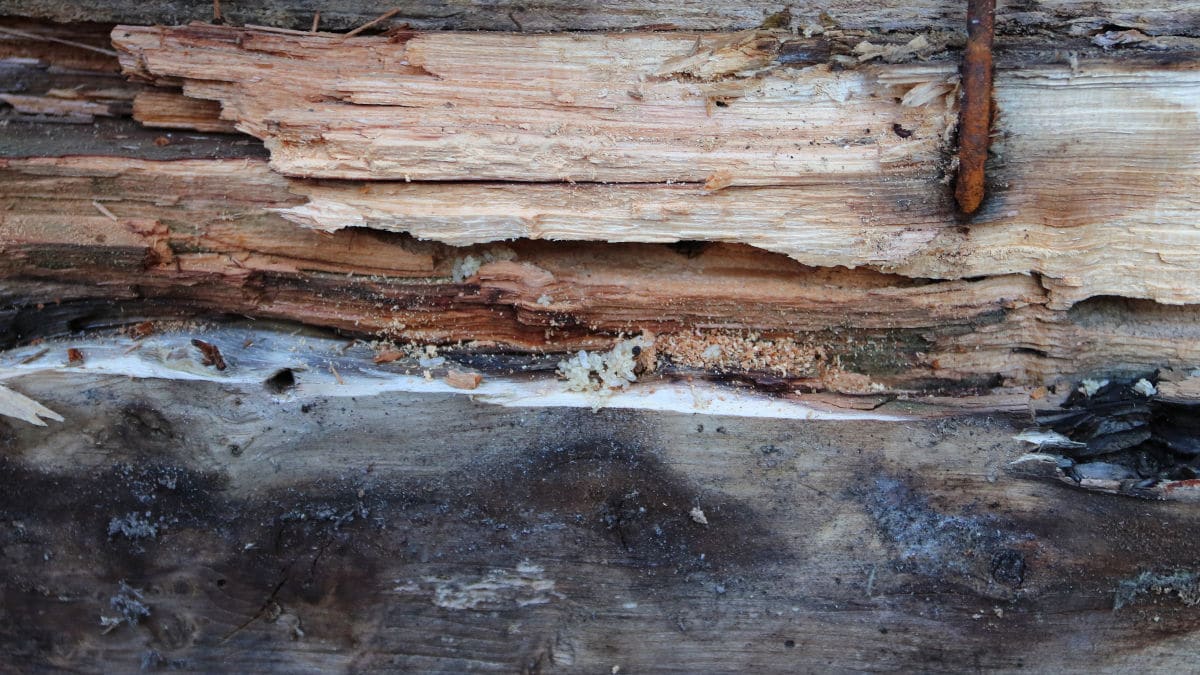
When these little critters first move in, they will search for food to make sure it’s within range and worth staying. Hopefully, as they make their way around your house, you will catch them in the act and stop them before they become too comfortable.
If you do spot them, act fast and get a professional in. Otherwise, you risk some serious problems…
No Frass
If you do see carpenter ants around the home but don’t come across any frass, it is worth checking any crawl spaces you have. These are likely to be dark and damp and, as such, the perfect nesting spot for these fellas.
No visible frass could be a sign they are already deeper within the structure.
Winged Ants
The large winged ants that fly around and crash land all over the place are courting ants in the process of reproduction. This means more potential hungry nippers chewing away at your woodwork.
Sometimes homeowners believe that the flying ants are the first to appear when ants want to start a nest, but this is wrong. If you have winged ants, it’s either because they have been unpaying tenants for a while, or they have quickly established a top spot and want to make more ants and nests. Either way, it’s bad news for your home.
Even if they are on the outside of the property on the windows, it is a sign they are trying to go back to the nest or start a new one nearby, so take heed.
Soft Timber
If you’ve got to this stage, something is very wrong – bits of your house sagging around you is no joke. It’s a sure sign that you have these troublesome tykes, and they have been running amok for some time.
Carpenter ants left untreated will mean the structural integrity of wooden supports and frames are compromised by the millions of small holes and tunnels running through them.
Early signs can be doors starting to stick, and windows are not opening as easily as they once did. Significant indicators are floors sagging and ceilings bowing.
Don’t let this be the sign that makes you realize that you have carpenter ants in the house!
Getting rid of Carpenter Ants
This is a BIG topic, too much to cover in this short guide – and may actually require professional help!
For now, check out our guide to the best carpenter ant killers, where there’s tons of info and effective products for tackling this pest.
Conclusion
So, that’s all, folks. Everything you need to know to identify and spot the signs of carpenter ants, and make sure they don’t destroy your house by bringing it down around you.
Following these pointers on identifying the carpenter ant from the more common smaller ant might just be your home’s saving grace.
If you’re suspicious, be sure to check for the signs above, and they will hopefully give you the warning you need.
Have you experienced a carpenter ant invasion? Share with us your trials and tribulations in the comments box below, or any other carpenter tricks you might have up your sleeve.
Happy hunting, readers!
Share this post
Save time and money on pest control
Subscribe to expert DIY pest control tips, pest control product reviews and information.

